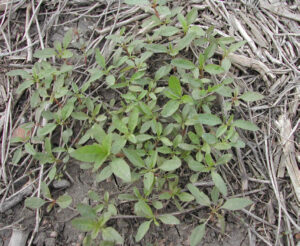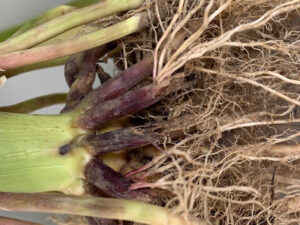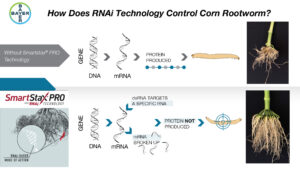Considerations for Selecting Corn Products Enhanced with Biotechnology
Since 1996, corn production has benefited from biotechnological traits and associated agronomic practices. Insect and herbicide tolerance traits placed into highly productive corn genetic lines have steadily increased yield potential while reducing pest and environmental stresses. Helping to maximize corn product yield potential and farm profitability is one of the greatest potential benefits from genetically modified (GM) corn products.
The results from a comprehensive review of 21 years of world-wide research data on GM products, conducted by researchers at the University of Pisa in Italy, showed GM corn products:
- Experienced an average increase in yield of 10.1% with a range of 5.6 to 24.5% depending on the corn product and GM traits.
- Corn products with stacked traits provided the highest yield increases.
- Grain quality was improved with GM corn products (mycotoxins were 29% lower, fumonisin was 31%lower, and trichothecens were 37% lower).
- Insect damage to corn ears was 59.6% less.
- Herbicide usage reduced by 10.1%.
- Insecticide usage reduced by 45.2%.
Trials have also shown that other benefits from certain GM corn products may include increased planting rates, which have the potential to increase yield and allow for more effective use of continuous corn.
Trait Benefits for Weed Management
Early-season weeds, such as common waterhemp, aggressively compete for nutrients and water that young corn plants need to help maximize yield potential (Figure 1). Herbicide resistant traits such as Roundup Ready® 2 Technology and LibertyLink® allow for the use of glyphosate only and glufosinate only herbicides, respectively. Corn products stacked with both of these traits can help reduce the potential for the development of herbicide resistance by alternating chemistries.
Corn products with Roundup Ready® 2 Technology provide proven crop safety, over-the-top application flexibility of Roundup® brand glyphosate only agricultural herbicides, and broad spectrum weed control. Overall benefits of timely weed control have shown:
- Reduced crop stress from weed competition for water and nutrients.
- Removal of weeds that host insects, diseases, and nematodes.
- Facilitates the use of reduced tillage for soil and water conservation and carbon sequestration.

Figure 1. Without management, common waterhemp can quickly compete with seedling corn for nutrients and water.
Trait Benefits for Insect Management
Feeding from European corn borer (ECB), corn earworm, western bean cutworm, fall armyworm, and corn rootworm can reduce yield and may allow pathogens to infect, multiply, and produce mycotoxins which have the potential to cause health problems in animals and humans.3,4,5 Corn products protected with insect-specific Bacillus thuringiensis (B.t.) events or RNAi technology protect the plant tissues (stalks, grain, roots) on which these insects feed, reducing the risk of lost yield or lower grain quality. Soil-applied and foliar insecticides can be used to help manage labeled insects; however, insecticide applications require precise application timing, proper rates, adequate coverage, and may affect beneficial insects, such as lady beetles. Additionally, insecticide efficacy can diminish quickly and leave plants vulnerable.
The average yield loss of one ECB per plant has been estimated at 5%.6 The loss can be a combination of stress caused by vascular tunneling (loss of nutrients and water), lodging, ear damage, and non-harvestable dropped ears. At current corn prices of around $6.00/bu, a 5% yield loss on 200 bu/acre corn is an economic impact of $60.00/acre (a $30,000 hit on 500 acres). The financial impact can increase if additional corn borers are present.
Protecting corn roots from corn rootworm feeding can have agronomic benefits in addition to insect management. Improved root growth and activity can allow plants to export more cytokinins from the roots and utilize nitrogen more effectively after flowering to promote higher kernel weight and yield potential. A Bayer Learning Center trial at Monmouth, Illinois in 2020 compared B.t. rootworm protected corn products against a non-B.t. protected corn product. The five B.t. corn rootworm protected corn products had an average yield of 199.9 bu/acre compared to the non-protected average yield of 171.5 bu/acre. The 28.4 bu/acre gain at $6.00/bu results in an extra $170.40/acre.

Figure 2. Corn root showing feeding damage from corn rootworms.
Root protection from corn rootworms is getting bolstered with RNAi technology or RNA-interference, a non-B.t. mode of action. SmartStax® PRO with RNAi Technology is the first registered product to use ribonucleic acid interference (RNAi) to help protect against corn rootworm. It has the ability to shut down, or interfere with, the DvSnf7 mechanism, that allows rootworms to produce an essential protein. Without this protein, the corn rootworm larvae cannot survive (Figure 3). SmartStax® PRO Technology is the next generation of corn rootworm protection, and the first product offering three modes of action for corn rootworm control.

Figure 3. Graphic of how RNAi technology controls corn rootworm.
Corn yields have increased through the years in part because of improved genetics, trait technology, and higher planting rates. An evaluation of 948 GM and 1250 conventional corn products from University of Wisconsin data for the years 1990 to 2010 showed GM corn products exhibited higher yields with higher seeding rates compared to the conventional corn products.2 Corn products with B.t. demonstrated a 6.6% increase in yield and 22% decrease in lodging compared to non-B.t. products.
Continuous corn operations are likely to experience increased insect and disease pressure compared to rotational corn operations because insects and pathogens have the potential to continuously reside in the soils and crop residue. Corn products with specific insect B.t. protection can help reduce the impact that corn rootworms and European and Southwestern corn borers can have in continuous corn. A University of Wisconsin continuous corn study in 2000 showed that farmers planting GM corn products had the potential for an increased opportunity for higher yields compared to conventional corn products.
Summary
The planting of GM corn products with herbicide resistance and multiple mode of action insect protection traits and RNAi technology along with intensive management have shown the potential to help farmers maximize the genetic potential of the products planted. The PG Economics annual report on the impact of GM crops shows that GM crops are credited with decreasing pesticide and fuel use, facilitating conservation tillage practices that reduce soil erosion, improving carbon retention, and lowering greenhouse gas emissions.
If non-B.t. corn is the planned option to plant, the crop should be scouted for insect activity and managed accordingly if an infestation has reached an economic threshold to help protect yield potential. University Extension Offices generally have procedures for scouting insects such as European corn borer and corn rootworm.
